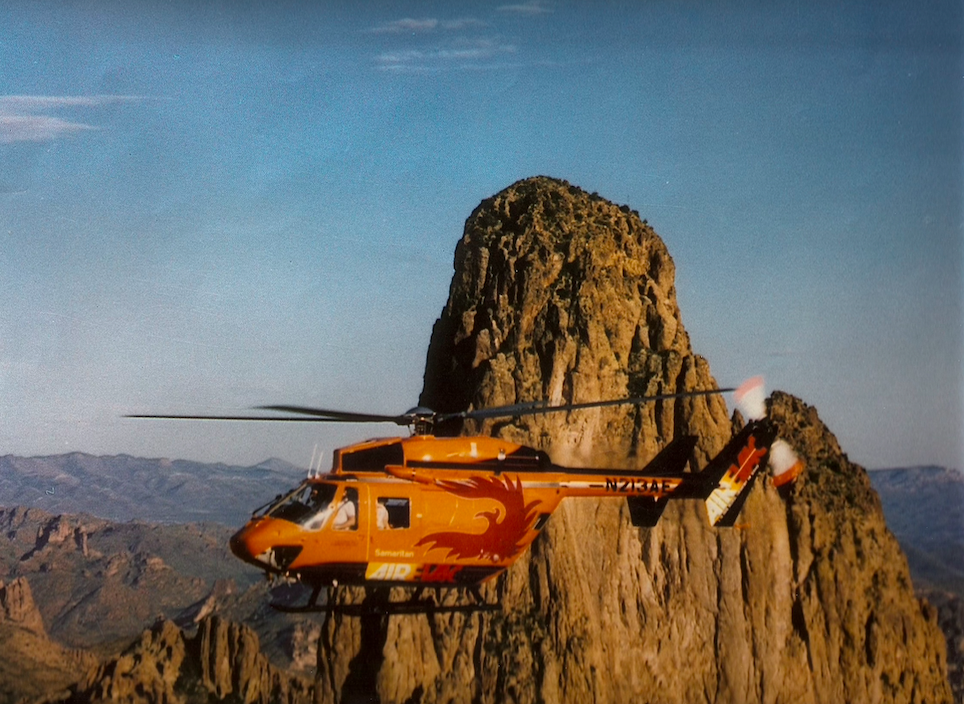
Our pilots usually had military backgrounds (Vietnam, especially), which explained why they were so comfortable dodging high power lines, flying at night, and landing in dubious conditions while avoiding “cumulous granite” mountains.
You’ll see in the “Taking Flight” chapter all the adrenaline and danger involved in flight nursing, especially in the most remote mountains and deserts of Arizona. I was a flight nurse through Air Evac of Samaritan Health System.
I applied and was accepted into the Flight Nurse Training Program, which entailed 13 weeks of physician-led instruction on all aspects of emergency medicine and aviation-related safety, including altitude physiology as it related to every disease process. Coursework included neurologic and spinal cord injuries, obstetrical emergencies, care and transport of the neonate, pediatrics, extrication and scene management, flight physiology and triage, communications, aircraft safety, survival principles, risk management, quality assurance, and toxicology— to name a few.

There is no way to overemphasize the value of this training — the highest level I could receive without being a doctor, exceeding even most military and other programs. Specialty physicians and emergency room doctors equipped us to deliver excellent high-level trauma and critical care.
I graduated and accepted a position with Samaritan Air Evac in 1981, the largest air medical program in the country. Thus, I entered a dangerous field, knowing I could make a difference. The decision would change everything, I later discovered.
